Main menu
Common skin conditions

NEWS
Join DermNet PRO
Read more
Quick links
Authors: Vanessa Ngan, Staff Writer, 2003; Updated: Dr Ian Coulson, Consultant Dermatologist, East Lancashire NHS Trust, Lancashire, UK. Copy edited by Gus Mitchell. September 2021
Introduction
Demographics
Clinical features
Complications
Diagnosis
Differential diagnoses
Treatment
Outcome
An angiokeratoma is a benign capillary ectasia in the superficial dermis that presents as an asymptomatic blue-red hyperkeratotic papule anywhere on the skin.
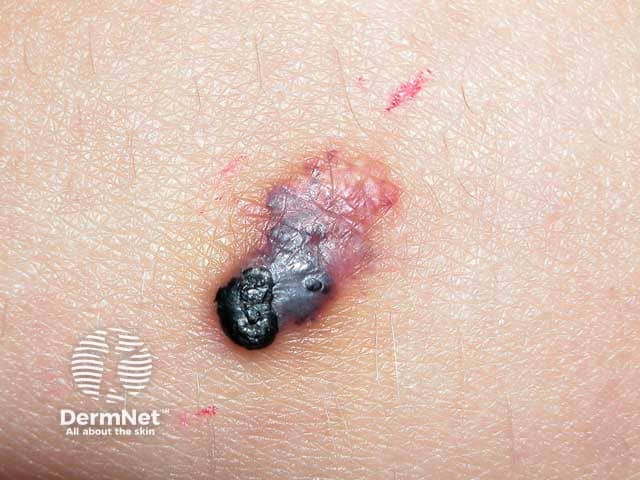
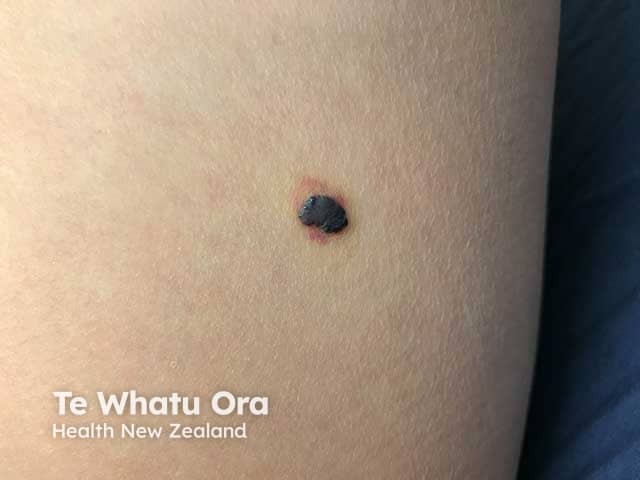
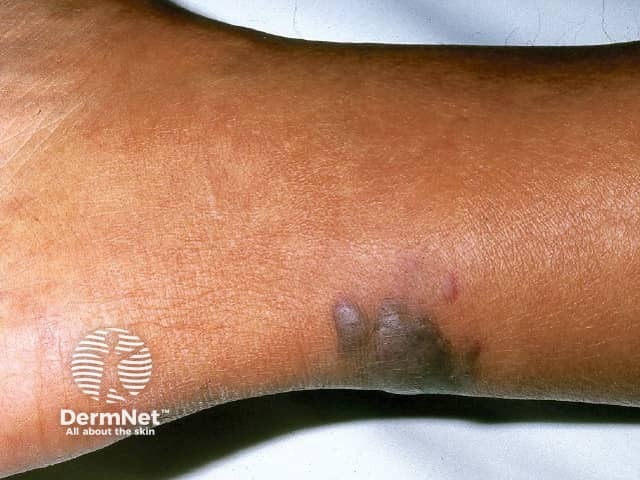
Table 1. Classification of angiokeratomas
Who gets it? |
Clinical/Distribution |
|
|---|---|---|
Sporadic angiokeratoma |
Common, increases with age |
Anywhere on the skin, sometimes on mucous membranes |
Angiokeratoma of Fordyce |
Common, male predominance, increases with age |
Found on scrotum and vulva |
Angiokeratoma of Mibelli |
Rare, appears in childhood |
Multiple warty purple papules; acral, elbows, knees, breast |
Angiokeratoma circumscriptum |
Rare vascular birthmark, female predominance |
Cluster of angiokeratomas |
Angiokeratoma corporis diffusum (Fabry disease) |
Rare X-linked genetic disorder, more severe in males, milder in carrier females |
Angiokeratomas most numerous over buttocks, groin, and lower trunk |
Acral pseudolymphomatous angiokeratoma of children (APACHE) |
Rare, predominantly seen in children |
Red-purple angiokeratoma-like papules on arms and legs, characteristic histology |
Drug-induced eruptive angiokeratomas |
Rare drug side effect – heparin (enoxaparin) |
Multiple eruptive lesions |
Penile angiokeratomas (PEAKERs) |
Subtype of genital angiokeratomas in males including children |
Glans penis and penile shaft, 20% associated with scrotal lesions |
Angiokeratomas are one of the multiple vascular lesion types described in Cobb syndrome.
Angiokeratomas are red-purple papules seldom more than 5 mm in diameter with a smooth or roughened surface.
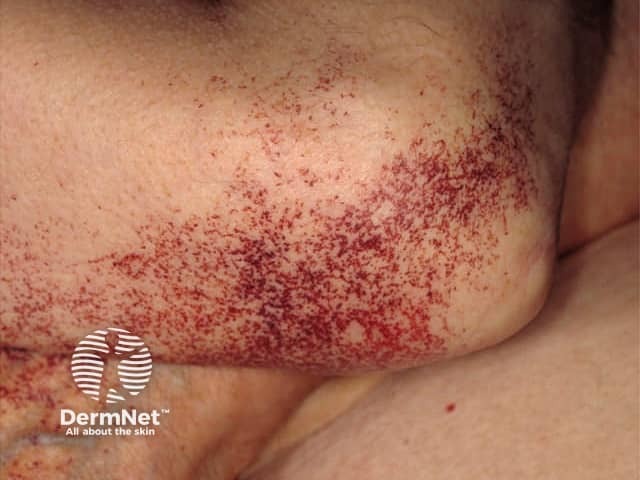
Angiokeratoma of Mibelli
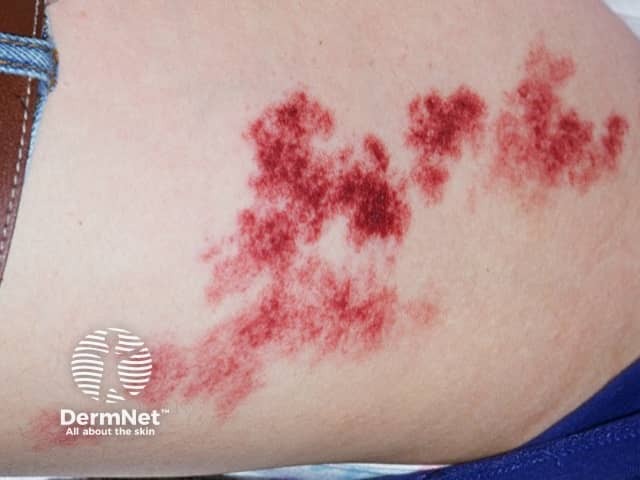
Angiokeratoma circumscriptum
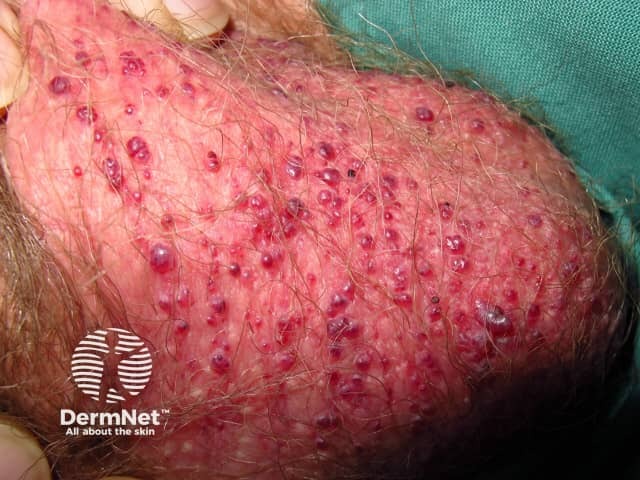
Angiokeratoma of Fordyce on scrotum
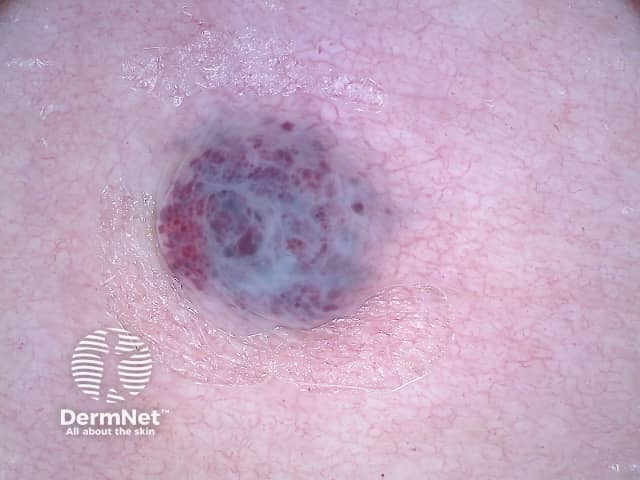
Whitish veil
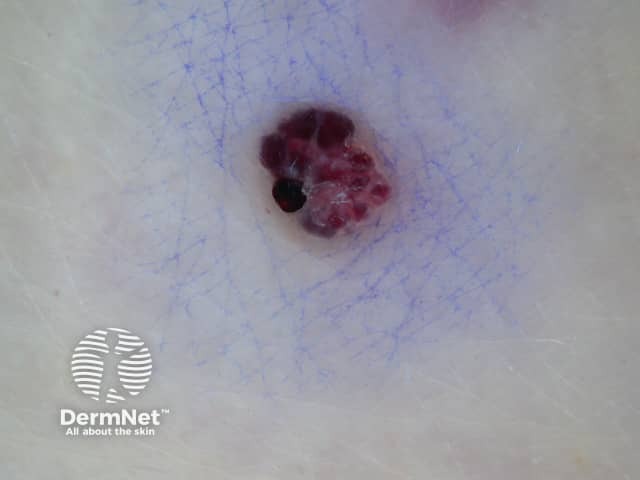
Vascular lacunae
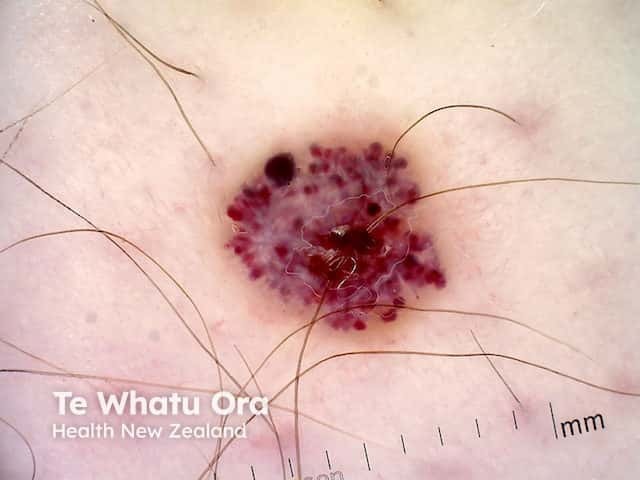
Angiokeratoma, polarised dermoscopy
[see more Angiokeratoma images]
Angiokeratomas are less obvious in skin of dark colour.
Angiokeratoma is usually diagnosed clinically on the typical appearance but can be confirmed on dermoscopy and skin biopsy [see Angiokeratoma pathology].
If Fabry disease is suspected, a blood test in males should be undertaken for alpha-galactosidase A activity. Genetic analysis (GLA gene) of affected males and carrier females will confirm the diagnosis. Skin biopsy may show intracellular accumulation of globotriasylceramide (Gb3).
APACHE is diagnosed on histology with characteristic lymphoid hyperplasia and proliferation of thick-walled vessels in the upper dermis, and is not a true angiokeratoma despite the clinical resemblance.
Angiokeratomas do not usually require treatment. Excisional biopsy may be indicated to exclude melanoma in some cases. Cautery, cryotherapy, and vascular lasers may be used to treat bleeding lesions or multiple lesions for cosmetic reasons.
Males with Fabry disease usually require enzyme replacement therapy.
APACHE may respond to topical sirolimus (rapamycin).
Angiokeratomas do not resolve spontaneously and tend to become more warty with time.